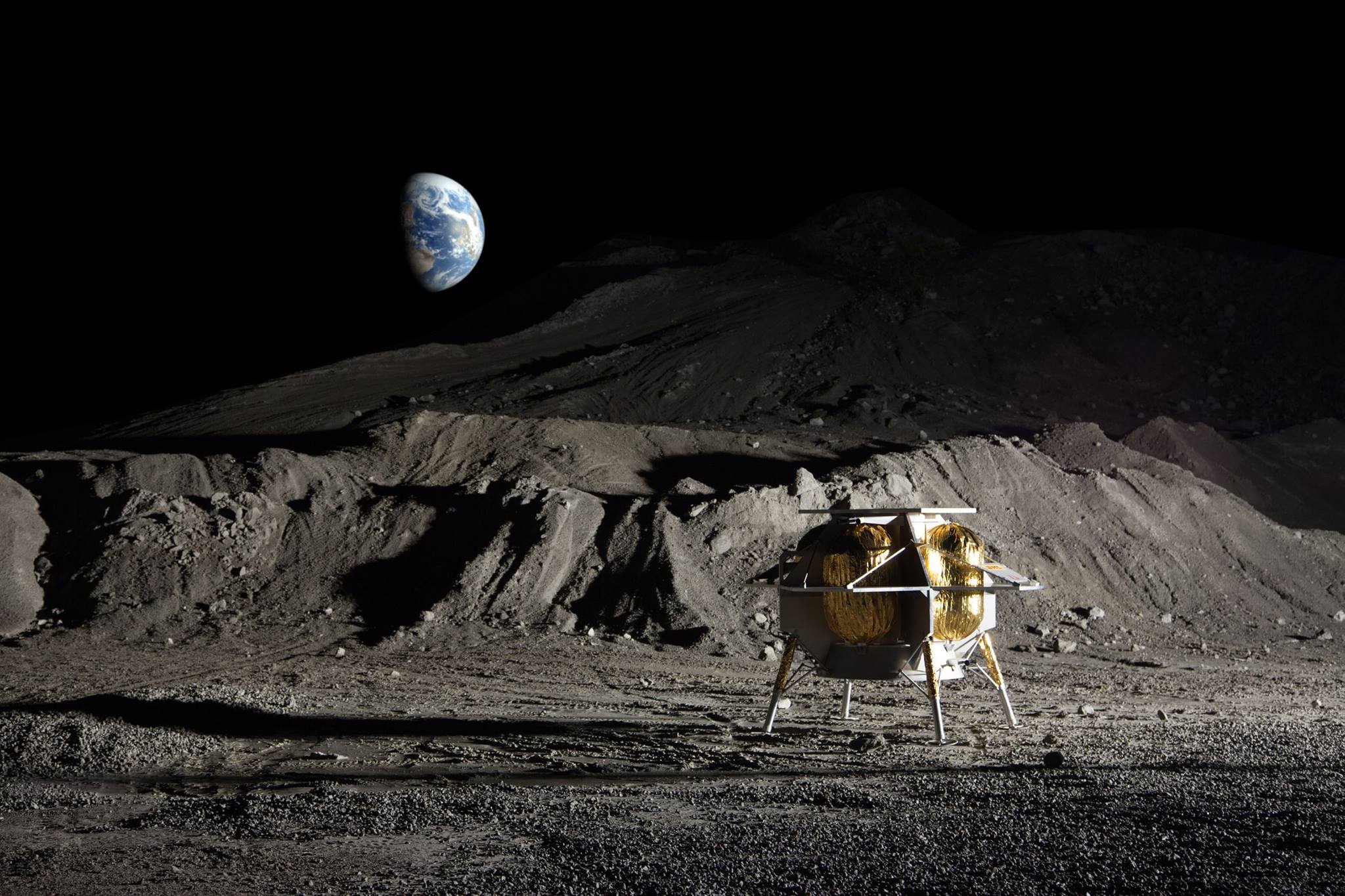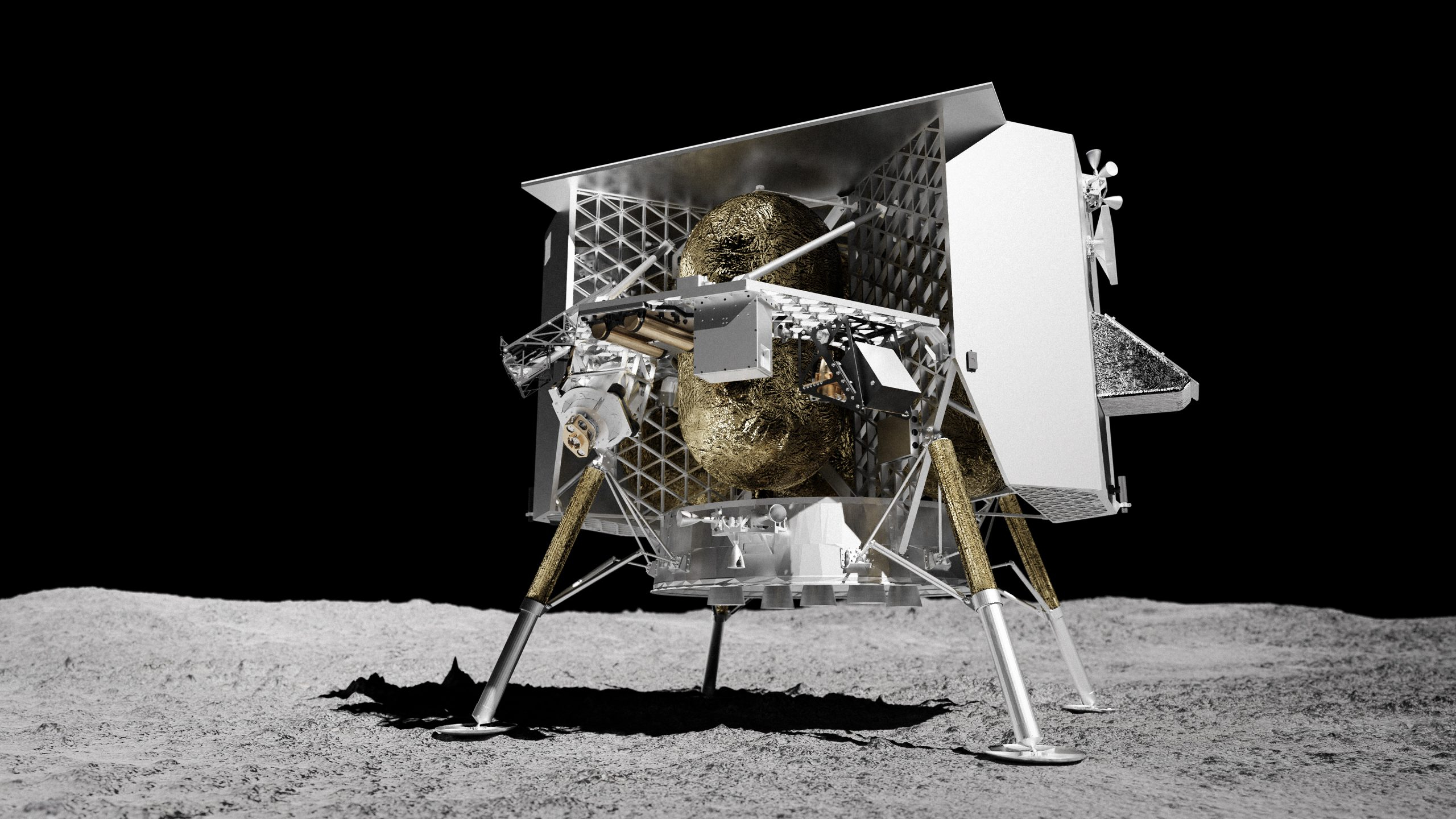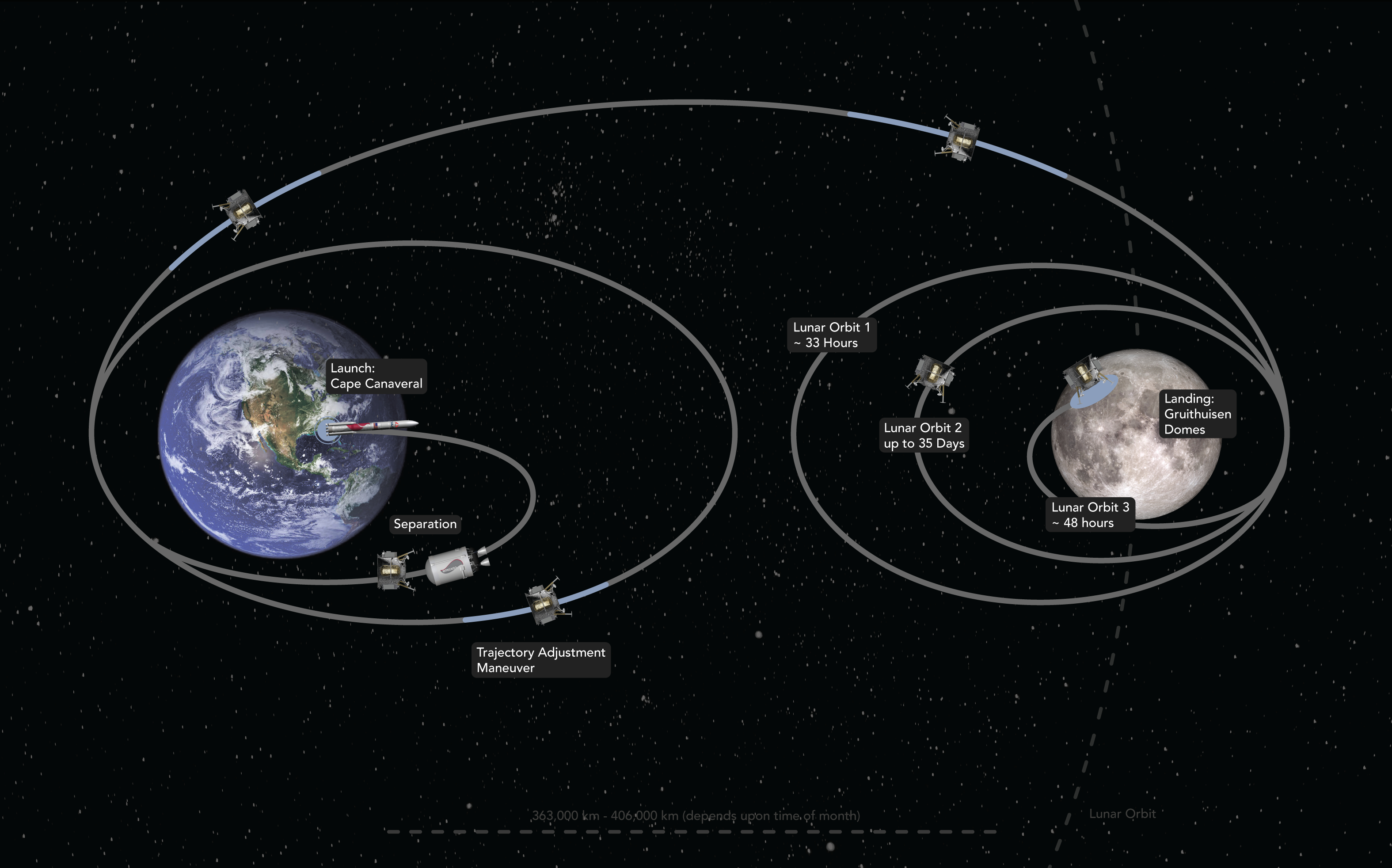The Peregrine Lunar Lander is set to launch on Dec 24. Here's what it'll bring to the moon
"Yes, it's Christmas Eve. But it will be one heck of a Christmas present."

During the wee hours of Christmas Eve this year, before the gift wrapping begins and the aroma of gingerbread brightens the air, a spacecraft is set to launch to the moon.
It's called the Peregrine Lunar Lander, named for the fastest flying bird on Earth. If all goes to plan, the robotic avian will zoom through space and fly into the moon's gravitational tides, then meticulously lower its orbit until eventually touching down on a region of ancient lunar lava flows known as the Bay of Stickiness, or Sinus Viscositatis.
This mission will be one for the history books for several reasons, one of which is the fact it'll be the first to launch under NASA’s Commercial Lunar Payload Services (CLPS) initiative, created as a way for the agency to bring payloads to the moon without having to construct all the spacecraft necessary to bring those payloads there. In this case, the company Astrobiotic is behind the Peregrine lander and NASA's paying to stash a few things onboard.
Related: Spiders on the Moon: 'Walking' Robots Will Explore Lunar Crevices and Caves
As for the rocket, there's another first to discuss. Peregrine will be lifting off on the first flight of United Launch Alliance's Vulcan Centaur rocket. The successor to the company's Atlas V and Delta IV vehicles, Vulcan Centaur is, among other things, built to carry quite a hefty amount of stuff to space.
And during a briefing on Nov. 29, representatives with Astrobiotic, United Launch Alliance and, of course, NASA, gathered to discuss what some of the Peregrine payloads are going to be as well as lay out how everything is expected to go down the day before Christmas.
What's heading to the moon?
There are five total NASA-sponsored payloads heading to the lunar surface during the mission, and the first is known as the "Peregrine ion trap mass spectrometer," or PITMS.
Breaking space news, the latest updates on rocket launches, skywatching events and more!
PITMS will be investigating the lunar exosphere, which is a thin gaseous envelope around the moon, by tapping into mass spectrometry. Mass spectrometry simply refers to the technique scientists use to measure the mass-to-charge ratio of ions, which are charged particles like hydrogen atoms that hold a positive proton, but no negative electron to balance the proton out.
"The science results from PITMS will aim to improve our knowledge of the abundance and behavior of volatiles on the moon and how they respond to perturbations such as rocket exhaust," Ryan Watkins, program scientist at NASA's Exploration Science Strategy and Integration Office, said.
Peregrine will also be bringing a neutron spectrometer system, or NSS, Watkins explained, which will measure the amount of neutrons near the lunar surface as well as their associated energies. By deduction, NSS will help scientists figure out how much hydrogen is present in the environment as well as levels of soil hydration.
The lunar retroreflector array, or LRA, getting launched on Peregrine in December is a device that consists of eight "retroreflectors," which Watkins compares to small mirrors on a small aluminum support structure: "The LRA will enable precision laser ranging to help determine the distance from any orbiting or landing spacecraft to the LRA that will be on the lander. So LRA is a passive optical instrument, and it's going to function as a permanent location marker on the moon for decades to come."
The final two instruments NASA's sending up with the mission include the near-infrared volatiles spectrometer system, or NIRVSS, and the linear energy transfer spectrometer, or LETS.
"NIRVSS is a suite of sensors that includes a near infrared spectrometer, a Thermal Radiometer and a high resolution seven color imager," Watkins said. "These sensors will make observations of the lunar surface to determine the surface composition, the fine scale and morphology and the thermal environment."
In other words, NIRVSS will help the team understand how those aforementioned volatiles may be diffused across the lunar surface — including whatever volatiles are created by the lander itself — and reveal how surface temperatures affect the substances.
LETS, on the other hand, is going to shine off the lunar surface, when the lander is still cruising in the moon's orbit. It's a radiation monitor that can measure the environment to help scientists learn what solar particle events might be occurring mid-flight. This is particularly important because if humans are to dwell in lunar orbit for long durations like NASA imagines, or even on the lunar surface, it'll be key to know what protection they'll need to wear to prevent too much exposure to radiation.
Together, these instruments will dissect features near the landing site known as "Gruithuisen Domes" that scientists are interested in because they represent volcanic flows on the moon, or "Mare volcanism."
"Characterizing the emplacement history of these Gruithuisen Domes relative to episodes of Mare volcanism is a really important component of understanding the entire history of the region," Watkins said.
But beyond NASA payloads, there are 15 more goodies getting sent to the moon. And while many of them are super scientific like the German Aerospace Center's M-42 radiation detector, quite a few are fun mementos that remind us of the humanity behind human space exploration.
Japan's Lunar Dream capsule, courtesy of the company Astroscale, is a time capsule that'll be onboard with messages from over 80,000 children around the world. The U.S.'s Elysium Space is sending the remains of peoples' loved ones to create lunar memorials. And scientists from Seychelles are sending one bitcoin.
"We're going to be bringing seven nations to the surface of the moon, six of which have not touched down software on the surface of the moon, including the UK, Mexico, Germany, Hungary, Japan, and Seychelles," John Thornton, the CEO of Astrobiotic said. "We actually made our first commercial payload sale for lunar delivery, and I believe it might have been one of the first in the world, back in 2014. And, since then, we've been collecting payload customers and building up the manifest for this mission."
"If you're a lunar scientist, you might have to wait your entire career to have one opportunity to fly an instrument on a planetary mission," he said. "CLPS and this partnership with NASA affords the opportunity for our nation's scientists to regularly touch the surface of the moon, multiple times in their careers, and have a campaign of tests and results."
As to how exactly Peregrine will get to the moon, here's what the team says will go down.
Getting there
Liftoff is currently scheduled for around 1:50 a.m. ET on Dec. 24, the team says, with rain dates falling on the two following days. If launch does happen during this window, the lander is expected to touch down on the lunar surface on Jan. 25 of next year.
"You've seen China, and more recently, India successfully landed on the moon in the last decade," Chris Culbert, project manager for CLPS at NASA’s Johnson Space Center in Houston, said. "But today, no private company has successfully landed on the moon. Landing on the moon is a daunting technical challenge, particularly for robotic vehicle engines, navigation systems, radios, and many other social systems all have to work together to enable a soft landing."
After launch, the launch vehicle and spacecraft (still connected) will get directly into a maneuver called a translunar injection, meaning it'll still be close to Earth but on a trajectory that essentially intersects with the moon's orbit. Within an hour or so of launch, the spacecraft will officially separate from its launch vehicle, and the team will start communicating with the lander and making small maneuvers to make sure the path looks okay.
"This will be actually the first time we're firing our engines as a system," Thornton said. "We've of course, fired them individually here on Earth, but this will be the first time it's been all together as a spacecraft, because you simply can't test that here on Earth."We'll be doing at least one, potentially up to three, of those trajectory correction maneuvers, and that's dependent on the precision of the initial launch."
Then, about 12 days later, the spacecraft will reach lunar orbit.
"We're gonna go to a medium orbit and stay in that orbit for a little while, while we wait for the local lighting conditions to align," Thornton said. "Most of the time between launch and landing is actually waiting for the local lighting to be correct. So basically, we're trying to land at a specific spot on the moon, at a specific time in the morning."
Once everything looks good, the spacecraft will lower onto the surface at the designated landing site. The lander will operate for about 10 days before the sun sets, leading to the same lunar night that saw India's Chandrayaan-3 lander fade away.
"It'll go from a relatively warm 100 to 120 degrees Celsius down to liquid nitrogen cold," Thornton said. "It will stay that way for two weeks, and typically with the temperatures in that range, there's lots of things that break."
"Yes, it's Christmas Eve," he said, "but it will be one heck of a Christmas present."

Monisha Ravisetti is Space.com's Astronomy Editor. She covers black holes, star explosions, gravitational waves, exoplanet discoveries and other enigmas hidden across the fabric of space and time. Previously, she was a science writer at CNET, and before that, reported for The Academic Times. Prior to becoming a writer, she was an immunology researcher at Weill Cornell Medical Center in New York. She graduated from New York University in 2018 with a B.A. in philosophy, physics and chemistry. She spends too much time playing online chess. Her favorite planet is Earth.


